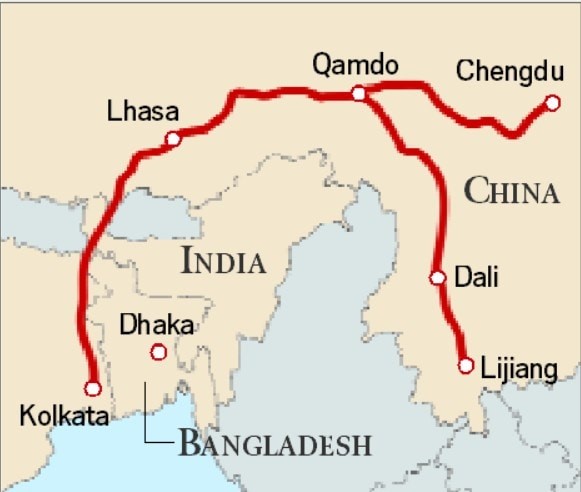|
One Liners 25-02-2025
|
|
History, Art and Culture
|
|
Ravi Shankar Vyas
- Born – Feb 25, 1884, in Gujarat.
- Role - 1921 Participated in Indian National Movement demonstrating his commitment by relinquishing his rights to his ancestral property.
- Associated - With Mahatma Gandhi & Sardar Patel.
- Participated in - Quit India Movement in 1942.
|
|
Adopt a Heritage 2.0 Programme.
- Initiated by –Bisleri International & Archaeological Survey of India (ASI)
- Focus - On core objective is water conservation at historical sites.
- Alignment - This project is in line with India's broader goals for environmental restoration and sustainability.
- Initial Phase - Will concentrate on reviving four historically significant water bodies
- Chand Baori (Abhaneri, Rajasthan)
- Baori at Neemrana (Rajasthan)
- Padma and Rani Talabs at Ranthambore Fort (Rajasthan)
- Budha Budhi Pond at Kalinjar Fort (Uttar Pradesh)
|
|
Geography
|
|
Dukono Eruption
- Located in- Halmahera Island in North Maluku, Indonesia.
- Nature of Volcano – Active
- Indonesia - Has 130 active volcanoes, Situated on the Ring of Fire, faces frequent eruptions & earthquakes.
- Active volcanoes - Mount Merapi and Kelut, both located on Java Island of Indonesia.
- Pacific Ring of Fire: This 40,000km zone, with tectonic plate interactions, causes 90% of global earthquakes.
|
|
Zagros Mountains
- Located In - Iraq was pulled into the Earth.
- Highest Peak- Mount Dena.
- Ancient city – Susa.
- Formation of Mountain –Tectonic in Origin formed during Miocene and Pliocene orogenic episodes.
- This resulted in Arabian Plate's subduction under the Eurasian Plate, creating a 1,500km natural barrier.
- Geographic Extension- Stretching from Turkey to Iran, ending at the Strait of Hormuz.
|
|
Polity & Governance
|
|
Principal Secretary to the PM
Shaktikanta Das recently appointed as Principal Secretary to the PM.
- Former post - Governor of RBI.
- Administrative head of - Prime Minister’s Office (PMO).
- Functions - Briefing notes for discussions with foreign dignitaries, ensuring inter-ministerial coordination, and managing key communications for the PM.
- Advisory Role -Assisting the Prime Minister on various domestic and foreign policy matters.
|
|
International Relations and Issues
|
|
India to Host 12th Regional 3R & Circular Economy Conference in Jaipur.
- Nodal Agency- Ministry of Housing & Urban Affairs
- Launched by - United Nations Centre for Regional Development in 2009.
- Theme- Realizing Circular Societies Towards Achieving Sustainable Development Goals & Carbon Neutrality in Asia-Pacific”.
- Aim - Provide strategic policy inputs to Asia-Pacific governments for 3R and circularity, while sharing best practices.
- Features - India's achievements in the 3R and circular economy, featuring exhibitions from key ministries and missions.
- The conference will include an international '3R trade and technology exhibition' with participants from Indian and Japanese businesses.
- The event will conclude with the 'Jaipur Declaration,' aimed at promoting a resource efficient circular economy in the Asia-Pacific region.
|
|
Economy
|
|
Compendium of Datasets and Registries in India 2024
- Nodal Ministry- Ministry of Statistics
- Data Centralization – Consolidation of 270 datasets from 40 Ministries.
- Objective - Offering a single access point for diverse sectors like agriculture, health, and education, aiding informed decisions.
- Metadata Standardization- Detailing with collection methods, update frequency & sharing policies, ensures data reliability and user trust.
- Legal and Regulatory Framework- Each dataset has a legal and regulatory framework.
- Outlines rules for data collection and dissemination.
- Crucial for stakeholders to understand regulations for responsible data use.
|
|
Environment
|
|
Soliga Tribe-Guardians of the BRT Tiger Reserve
- Soliga meaning - "Children of bamboo”.
- Reside – In Karnataka's Biligiri Rangana & Male Mahadeshwara Hills.
- Population Found – Karnataka & Tamil Nadu.
- Language spoken- Sholaga, Kannada & Tamil.
- Unique Rights & Habitat – They are the India’s 1st tribe granted official rights within a tiger reserve to Own, manage, and use forest resources.
- Role – Conservation of Biligiri Rangaswamy Temple Tiger Reserve.
- Livelihood - Engage in shifting cultivation and forest product collection, with honey being a vital food source.
|
|
Prakriti 2025
- Inauguration - Union Minister for Power, Shri Manohar Lal.
- Location - New Delhi.
- Focus - Carbon markets and transformational climate initiatives.
- Goal - Promoting resilience, awareness, knowledge, and resources.
|
|
Security
|
|
Sagar Kavach’ security exercise
- Location- West Bengal coastline.
- Objective – Exercise aimed to improve Standard Operating Procedures and enhance inter-agency coordination for India’s eastern maritime border.
- Functions - Scenarios involving hijacked fishing boats and barges.
- Tested response to illegal transportation of goods along the coastline.
- Focused on detection and disposal of improvised explosive devices on critical infrastructure.
|


